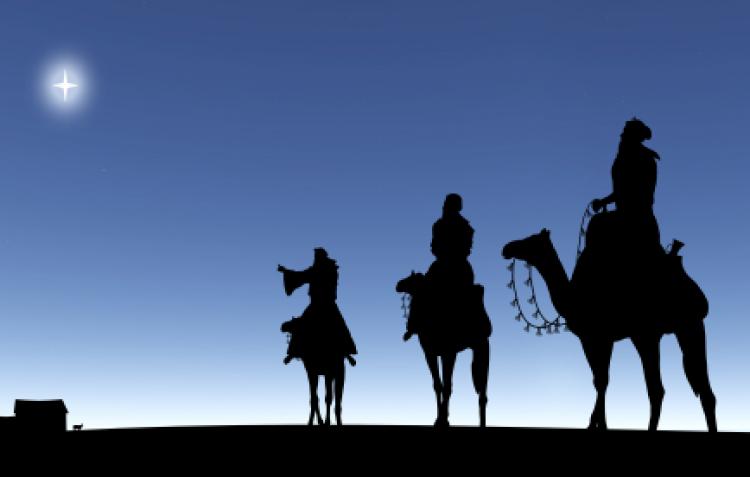
AM and PM Explained
How does the 12-hour clock system work? Is midnight 12 am or 12 pm?
Many Christians around the world annually celebrate Epiphany on January 6. It is a public holiday in many countries and marks two events in Jesus Christ’s life, according to the Christian Bible. The first event was when the three wise men, or kings, visited infant Jesus. The second event was when St John the Baptist baptized Jesus.

The three wise men's (or kings') visit to baby Jesus Christ is remembered on Epiphany.
©iStockphoto.com/kim258
January 6, which is 12 days after Christmas in the Gregorian calendar, marks not only the end of the Christmas holidays but also the start of the Carnival season, which climaxes with Mardi Gras. In some European countries, such as the Czech Republic and Slovakia, children dress as the three kings and visit houses. In their roles as the kings, or wise men, they sing about the Jesus’ birth and pay homage to the “king of kings”. They are rewarded with praise and cookies.
Dia de los Reyes Magos is the Latin American celebration of Epiphany. In many Latin American countries, it is the three wise men and not Santa Claus who bring gifts for children. Children write letters to the wise men telling them how good they were and what gifts they want. In France Le Jour des Rois (the Day of Kings), sometimes called the Fête des Rois, is celebrated with parties for children and adults. The galette des rois, or “cake of kings”, highlights these celebrations. This cake is round and flat, cut into the pantry, covered with a white napkin and carried into a dining room.
Children in Spain fill their shoes with straw or grain for the three kings’ horses to eat and place them on balconies or by the front door on Epiphany Eve. The next day they find cookies, sweets or gifts in their place. The “three kings” make an entry in many cities in Spain on Epiphany Eve, accompanied by military bands and drummers in medieval dress.
Epiphany is a public holiday in countries such as Austria, Colombia, Croatia, Cyprus, Poland, Ethiopia (but on different date that varies annually), parts of Germany, Greece, Italy, Slovakia, Spain, and Uruguay. It is not a public holiday in Australia, Canada, the United Kingdom and the United States (except the US Virgin Islands where it is a public holiday).
Epiphany is commonly known as Three Kings’ Day or the Feast of the Epiphany. It means “manifestation” or “showing forth.” It is also called Theophany (“manifestation of God”), especially by Eastern Christians. Epiphany refers not only to the day itself but to the church season that follows it.
It commemorates the first two occasions on which Jesus’ divinity, according to Christian belief, was manifested: when the three kings (also known as wise men or Magi) visited infant Jesus in Bethlehem, and when John the Baptist baptized him in the River Jordan. The Roman Catholic and Protestant churches emphasize the visit of the Magi when they celebrate the Epiphany. The Eastern Orthodox churches focus on Jesus’ baptism.
Epiphany is one of the oldest Christian feasts. It was celebrated since the end of the second century, before the Christmas holiday was established. Like other Christian seasons, the church appropriated Epiphany from an old pagan festival. As early as 1996 BCE, the Egyptians celebrated the winter solstice (which then occurred on January 6) with a tribute to Aeon, the Virgin. It is important to note that the holiday was established prior to the Gregorian calendar’s introduction.
Various paintings, artworks and sketches show the three wise men and Jesus. Some paintings artworks show the three wise men on the way to Bethlehem or adoring baby Jesus. The kings are important because their visit illustrates that Jesus was the king of all kings who came for the Jews and the Gentiles.
The star that guides the wise men to Christ also symbolizes Epiphany, as well as the three gifts they gave to Jesus:
Many Orthodox churches consider Jesus’ baptism to be the first step towards the crucifixion. The liturgical color for the Epiphany season is white.

How does the 12-hour clock system work? Is midnight 12 am or 12 pm?

Why do many countries set the clocks back and forth an hour twice a year?

Why are there 12 months? How long are they, and what do the month names mean?

Coordinated Universal Time (UTC) is the basis for civil time today. This 24-hour time standard is kept using highly precise atomic clocks combined with the Earth's rotation.